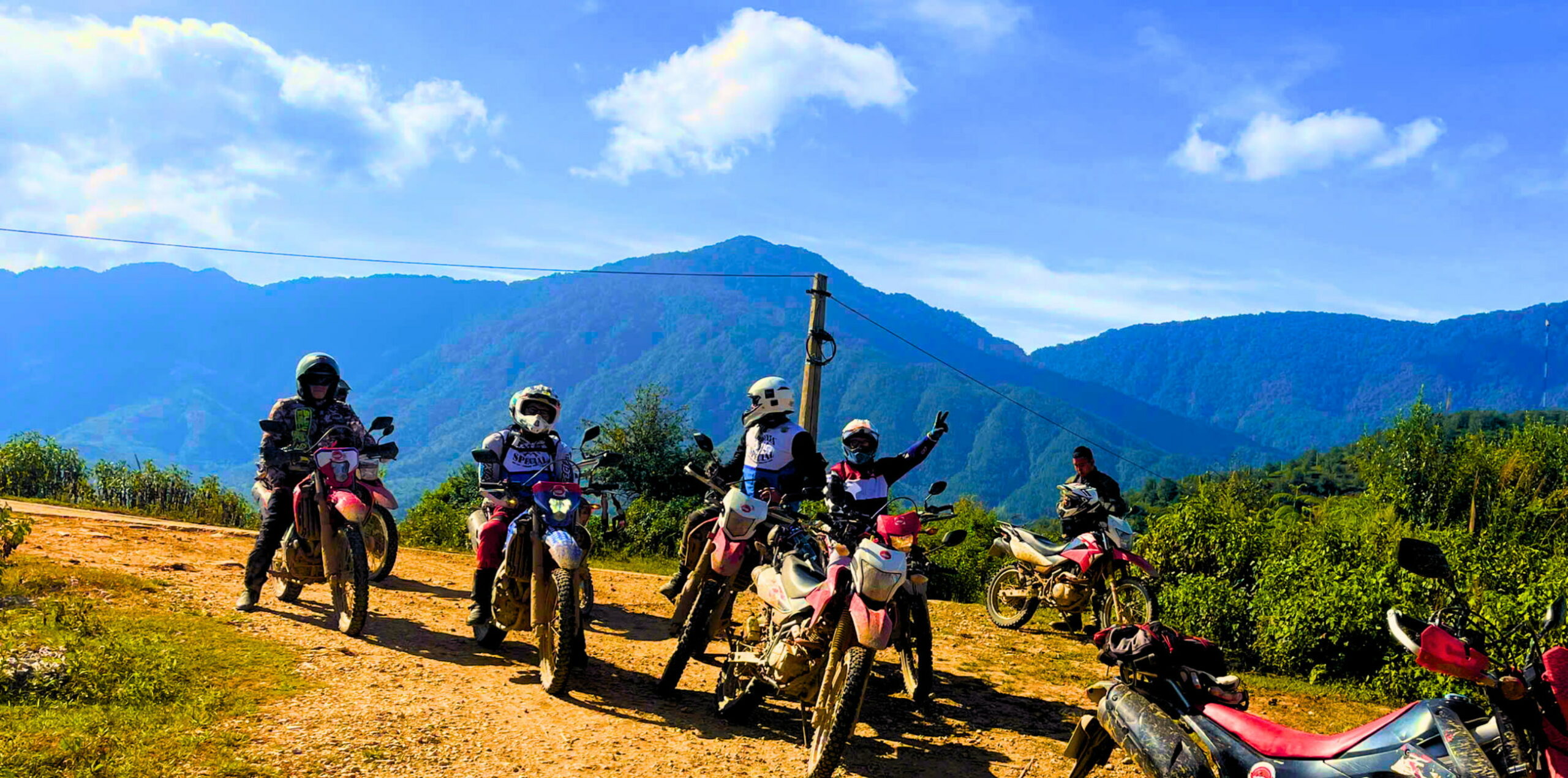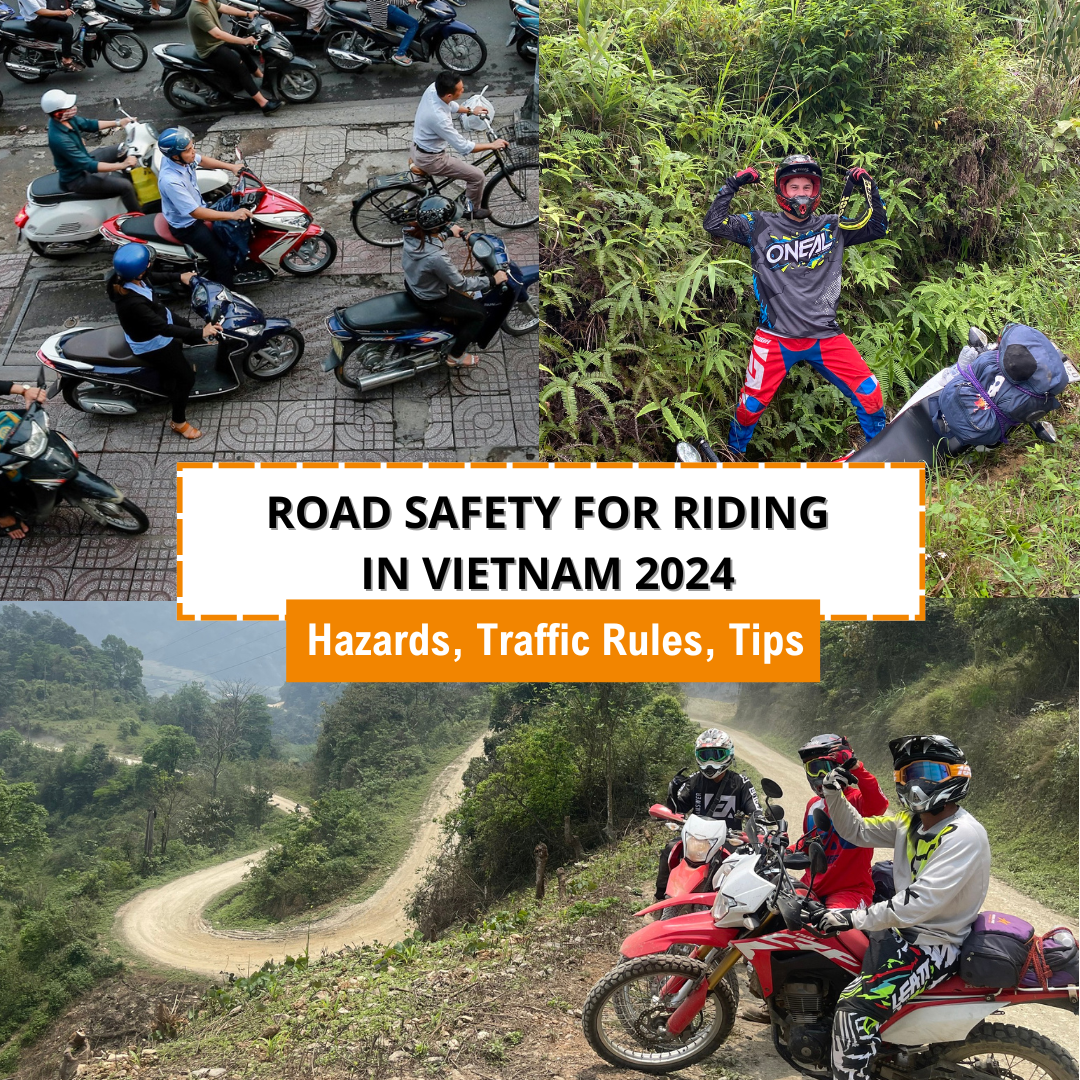
Road Safety For Riding In Vietnam 2024
Vietnam’s vibrant culture and stunning landscapes make it a popular destination for motorcycle enthusiasts. However, riding in Vietnam presents unique challenges due to its traffic conditions, diverse terrain, and unpredictable weather.
To ensure a safe and enjoyable journey, it’s essential to understand the local traffic rules and be prepared for potential hazards. In this blog post, we’ll provide valuable insights and guide to road safety for riding in Vietnam for riders.
Overview Of Traffic In Vietnam
Vietnam’s roads are a vibrant tapestry of vehicles, from motorbikes to cars, buses, and bicycles. It’s essential to understand the country’s unique traffic dynamics to master the art of road safety for riding in Vietnam.
- Motorbike Dominance: Motorbikes are the most common mode of transportation, accounting for a significant portion of the traffic.
- Chaotic Traffic: The unpredictable and chaotic nature of traffic in Vietnam, especially in urban areas can significantly impact road safety.
- Lane Changes and Weaving: Motorbikes frequently change lanes and weave through traffic, so be alert and anticipate their movements.
- Animal Encounters: Be prepared for animals like dogs, cats, and livestock crossing the road, especially in rural areas.
- Horn Culture: Honking is a common practice in Vietnam, often used to alert other drivers or pedestrians.
- Traffic Signals and Signs: While traffic lights exist, they may not always be strictly followed, especially in rural areas. Signs can be small and put on places that are hard to see.
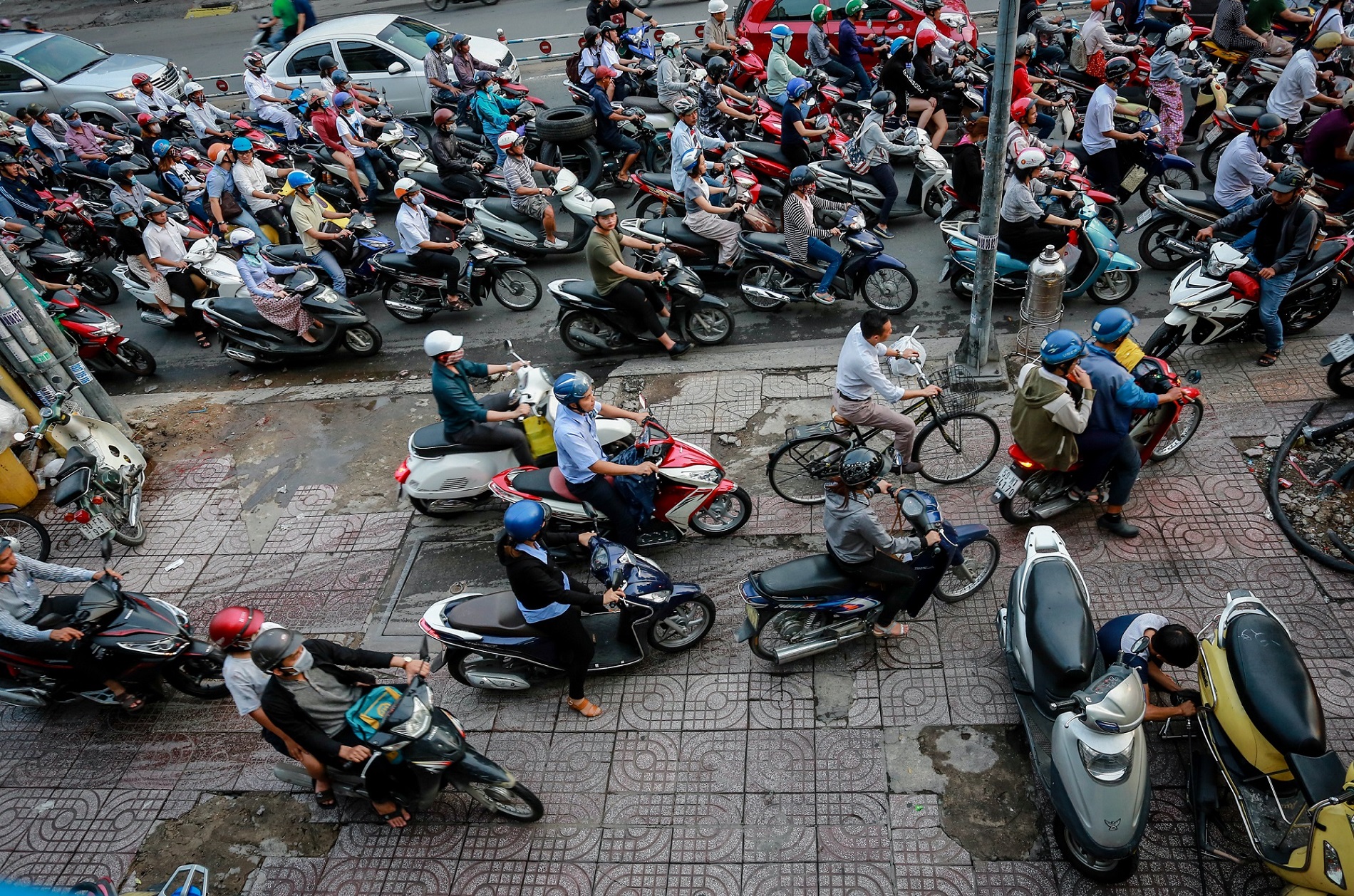
Road Safety For Riding In Vietnam – Traffic Jam in Rust Hours
Potential Motorbike Hazards – Road Safety Essentials For Riding In Vietnam
With its diverse terrain, bustling traffic, and unique weather conditions, Vietnam presents specific challenges for riders. Let’s delve into the potential motorbike hazards related to terrain, weather and other common hazards you may encounter on the road to ensure road safety when riding in Vietnam for riders.
Terrain Related Hazards
Vietnam’s diverse terrain, from rugged mountains to sandy coastlines, offers endless opportunities for motorcycle adventures. While the traffic in major cities can be chaotic, we carefully select quiet, countryside roads for our tours, prioritizing your safety and enjoyment.
Ensure road safety in Vietnam by being prepared for varying road conditions:
- Paved Roads: Even paved roads can have rough sections, especially in mountainous areas. Watch out for potholes, cracks, and uneven surfaces.
- Off-Road: Experience the thrill of riding on dirt, gravel, or rocky roads.
- Sharp Turns: Navigate hairpin turns and zigzag roads with care, especially in areas with blind spots.
- Steep Grades: Master inclines and declines using engine braking to maintain control.
- Water Crossings: Assess the depth and current before venturing into slow-moving water.
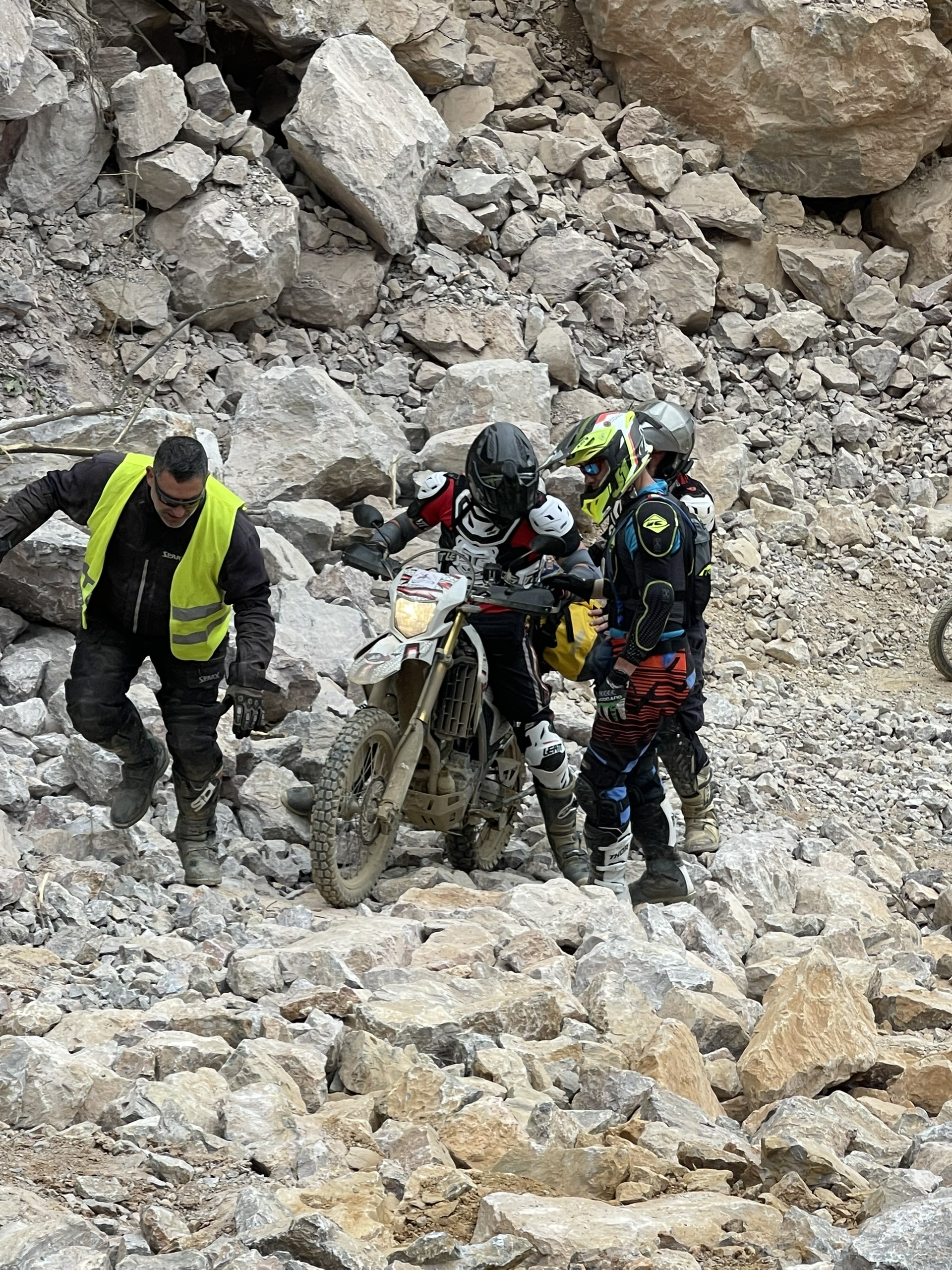
Road Safety For Riding In Vietnam – Road Condition
Weather Related Hazards
Vietnam’s weather is unpredictable and can vary significantly from region to region. Here are some potential motorbike hazards related to weather to be aware of:
- Sudden downpours and flooding: Be prepared for unexpected rain showers, especially during the rainy season. Heavy rainfall can lead to flooding in low-lying areas, landslide and roads may become slippery.
- Typhoons: Vietnam is located in the typhoon belt, so be aware of potential typhoon threats. These storms can bring strong winds, heavy rain, and flooding.
- Heat and humidity: during summer months, temperatures can be high and humidity can be intense, leading to dehydration and fatigue.
- Cold weather: In mountainous areas, temperatures can drop significantly during the winter months.
- Limited visibility: Fog, especially in mountainous areas, can reduce visibility and effect road safety for riding in Vietnam. Street lighting may also be scarce in rural areas, affecting your ability to see other vehicles.
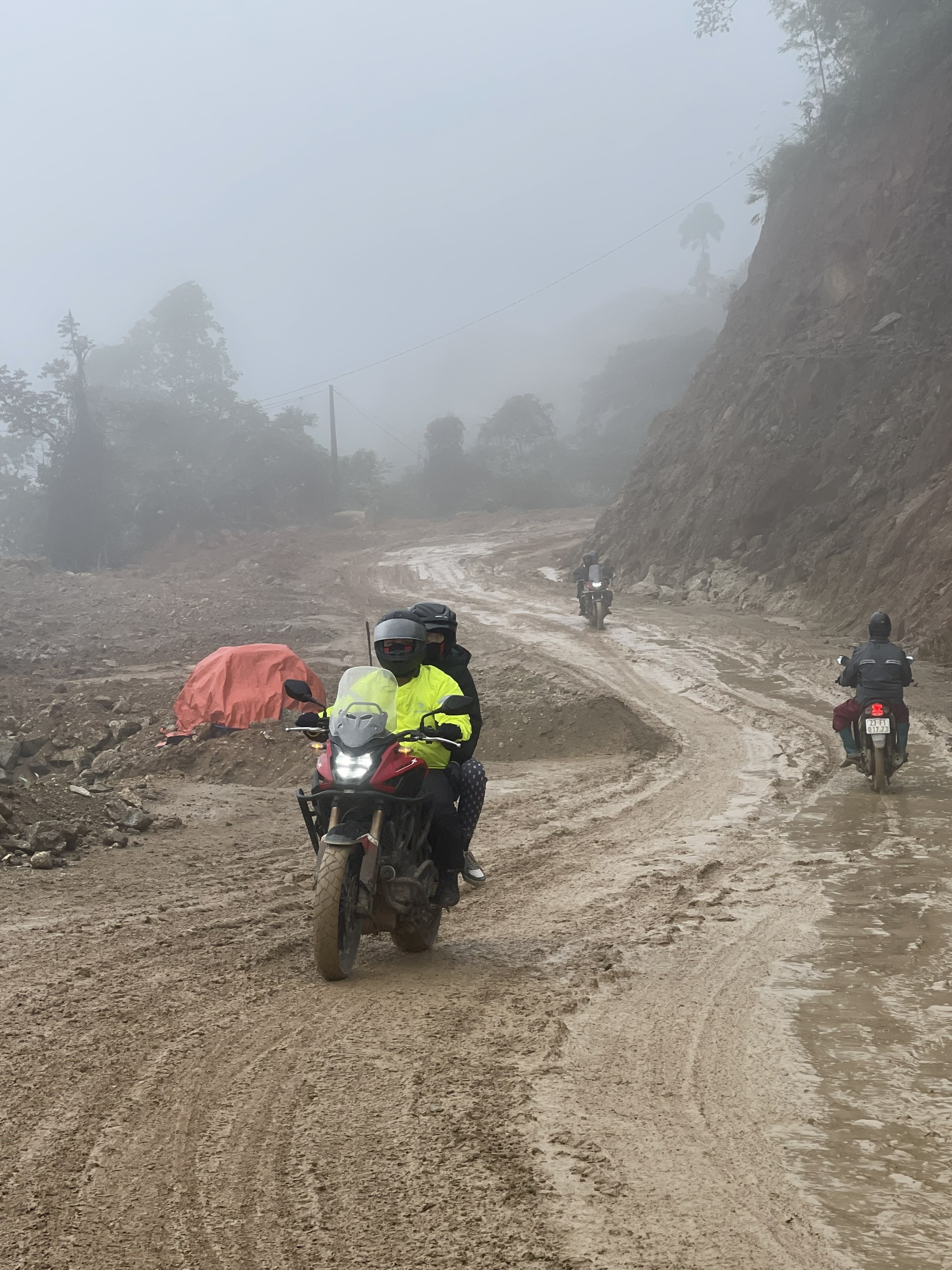
Road Safety For Riding In Vietnam – Weather Condition
Read more >>>> Best time to ride motorbike in Vietnam: Tips and Advice
Common Motorbike Tour Related Hazards
- Unpredictable Traffic: Motorbikes dominate Vietnamese roads, and traffic patterns can be chaotic. Be alert for frequent lane changes, weaving, and unexpected animals/livestock crossing the road.
- Getting Lost: Off-road trails often venture into remote areas far from gas stations, towns, or cell phone reception. If lost, you could run out of fuel, water, or food, leading to dehydration, exhaustion, and hindering your ability to find your way back. Getting lost increases the risk of accidents due to stress, fatigue, or unfamiliar terrain.
- Mechanical Breakdowns: Minor breakdowns can occur. For larger groups (5 riders or more), a mechanic will be allocated to address mechanical issues on the road. Additionally, tour guides are equipped with basic mechanical skills and a comprehensive toolkit containing spare parts to handle minor repairs and maintenance issues on the spot, ensuring swift solutions for unforeseen problems.
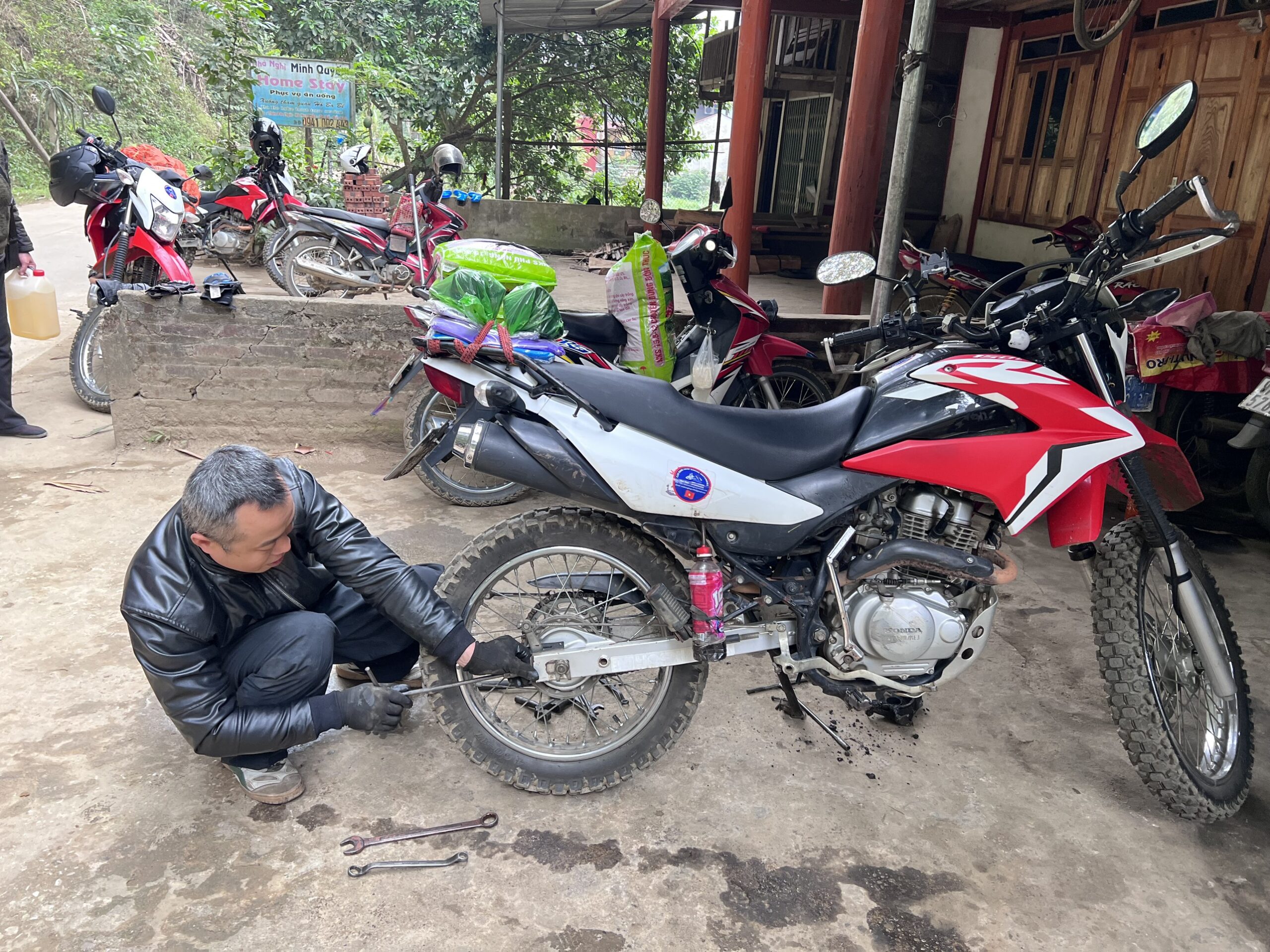
Road Safety For Riding In Vietnam: common motorbike hazards
Traffic Rules – Road Safety Essentials For Riding In Vietnam
Despite the chaotic scenes you may have seen, Vietnam does have traffic rules. Vietnam has specific traffic laws that must be followed. Familiarize yourself with these rules to ensure a smooth and safe riding.
- Foreign riders need to be at least 18 years old and a valid driver’s licence to drive in Vietnam. Foreign riders who already have a driver’s licence from their home country can apply to convert it to a Vietnamese driver’s licence. Only International Driving Permits (IDPs) issued by countries that are party to the Vienna Convention in a uniform format are valid for use in Vietnam.
You can only get your IDP in your home country, the permit cannot be obtained once in Vietnam or on the road. Take note, the 1968 Convention has not been ratified by countries as Australia, Canada, Iceland, India, Ireland, Japan, New Zealand, and United States of America. This means that an International Driving Permit obtained in these countries is not valid in Vietnam.
Other types of international driver’s licences (including IAA International Driving Permits) will not be valid for use in Vietnam. You can read more about Vietnam Motorcycle Driving License in our blog for further information.
- For motorbikes, helmets are mandatory for the safety of both driver and any passengers.
- Vehicles in Vietnam adhere to right-hand traffic, similar to the United States and most European countries.
- The legal blood alcohol content (BAC) in Vietnam is 0.00%. If you are caught driving under the influence of alcohol in Vietnam, you will face serious penalties. You could be fined, have your driver’s licence suspended.
- The maximum number of people allowed on a motorcycle is two, including the driver. In some unusual cases (transporting sick people to hospitals, punishing offenders, children under 14), the motorcycle may carry maximum two passengers.
- The maximum speed of motorcycles and cars when participating in traffic:
- Maximum speed of motorcycles and cars in urban areas (excluding highways for car):
-
-
- Two-lane roads; one-way roads with two or more lanes for vehicles: 60 km/h.
- Two-lane roads; one-way roads with one lane for vehicles: 50 km/h.
-
-
- Maximum speed of motorcycles outside urban areas:
-
-
- Two-lane roads; one-way roads with two or more lanes for vehicles: 70 km/h.
- Two-lane roads; one-way roads with one lane for vehicles: 60 km/h.
-
-
- Maximum speed of cars outside urban areas (excluding highways):
-
-
- Two-lane roads; one-way roads with two or more lanes for vehicles: 90 km/h.
- Two-lane roads; one-way roads with one lane for vehicles: 80 km/h.
-
-
- The maximum speed of cars on the highway is no more than 120 km/h.
- Don’t park close to the sidewalks, or pavement, this will be obstructive and dangerous for traffic.
For a safe and enjoyable ride, prioritize road safety for riding in Vietnam by equipping yourself with knowledge of traffic rules.
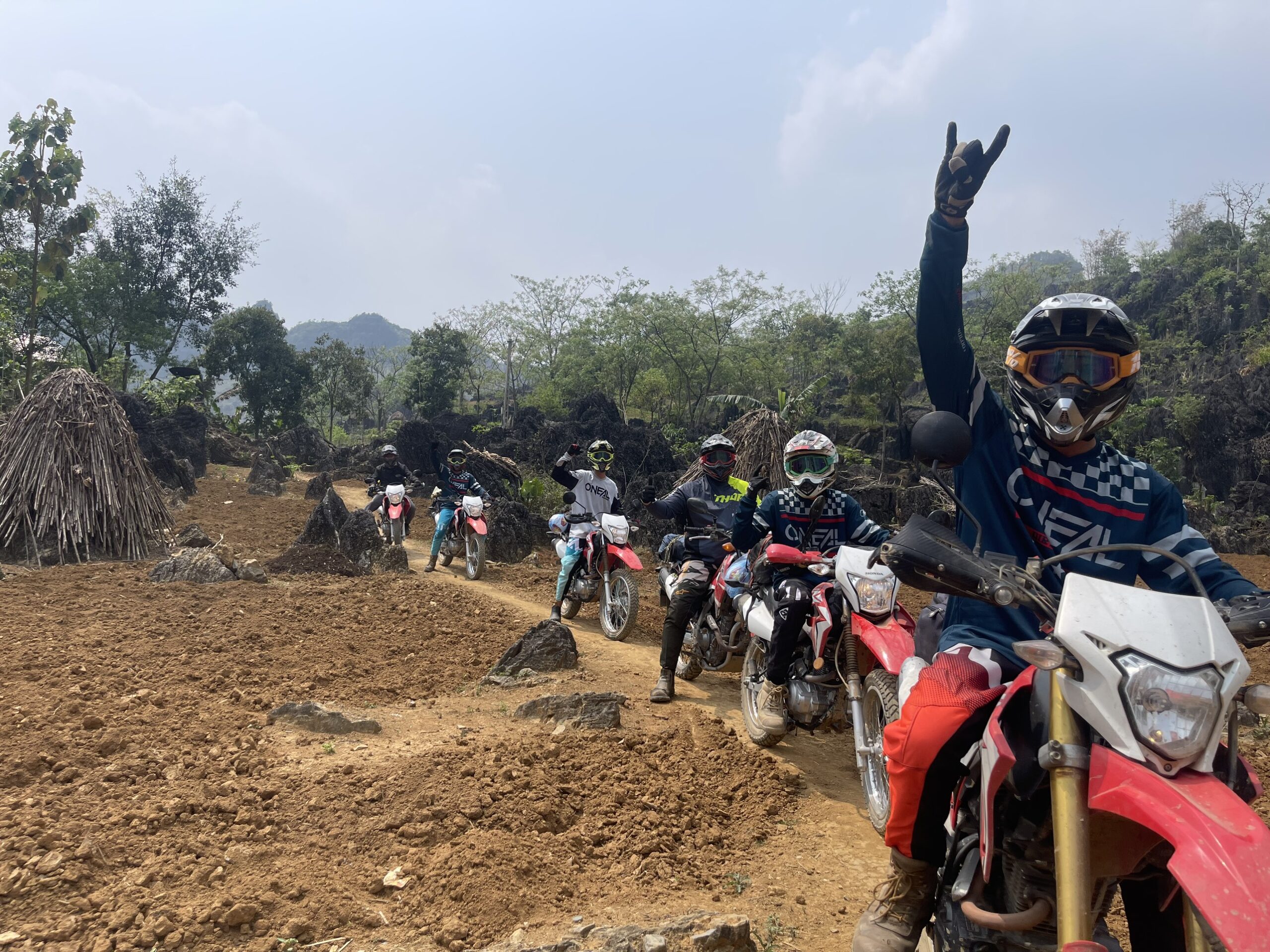
Understand Road Rules before riding in Vietnam for Road Safety
Road Safety Tips For Riding In Vietnam
Embarking on a Vietnam motorbike tour is a thrilling adventure, and with a few essential tips of road safety for riding in Vietnam, you can make it truly unforgettable:
- Obey the speed limit and adjust your speed and riding technique based on road, weather and traffic conditions.
- Maintain a steady and predictable pace, especially in busy areas like schools and markets and avoid erratic movements. Signal your intentions (turns, stops) clearly well in advance.
- Ride defensively, and be alert for pedestrians, livestock and other vehicles. Ride where you’re clearly visible to other vehicles and observe their behavior carefully.
- Slow down at intersections and observe carefully for people running red lights. They often do.
- Locals tend to maintain a closer following distance than you might be accustomed to. Hence, maintaining a safe distance is crucial. Leave enough space between you and the vehicle in front at all times, in all kinds of traffic, weather and road conditions to react comfortably in case of sudden braking.
- Watch out for potholes, uneven surfaces, and loose gravel, especially during monsoon season.
- Honking is used more for communication than aggression. It’s a way to signal your presence and avoid accidents. But don’t honk around large animals as it can spook them.
- Know your skills and limits, and ride within them.
- Do not ride when you are fatigued, ill or under the influence of alcohol, prescription drugs, over-the-counter drugs or any other drugs. Fatigue, illness, alcohol and drugs can cause drowsiness, loss of coordination and loss of balance. They can also affect your awareness and judgement.
- When approaching a curve, choose a speed and lean angle that allows you to pass through the curve in your own land without applying the brakes. Excessive speed, improper lean angle or braking in a curve can cause loss of control. Do not allow components to contact the road surface when leaning the motorcycle in a curve, as this could cause loss of control.
- Always refer to Vietnam Biker Mates to confirm your bike’s weight capacity for safe riding with a passenger.
- If your passenger is a newbie, instruct them what gets hot, where to place their feet, how to get on and off the bike, where to hold on, and how to sit. Agree on hand signals or taps for common needs.
- To maximize braking effectiveness, use the front and rear brakes together. Be aware of the following braking facts and practices:
- The rear brake provides 40% of the motorcycle’s stopping power, at most. Use the front and rear brakes together.
- To avoid skidding, apply the brakes gradually when the road is wet or rough, or contains loose or other slippery substances.
- If possible, avoid applying the brakes while making a turn. Motorcycle tires have less traction during turns, so braking will increase the possibility of skidding. Bring the motorcycle to the upright position before applying the brakes.
- When off road riding, stick to well-defined off-road routes, minimizing the risk of straying off course. Always stay within sight of the other riders and guides.
While Vietnam’s traffic may require adaptation, it’s not necessarily more dangerous than other countries with similar traffic conditions. By following our tips for riding motorbike in Vietnam and riding defensively, you can enjoy a safe and epic riding in Vietnam.
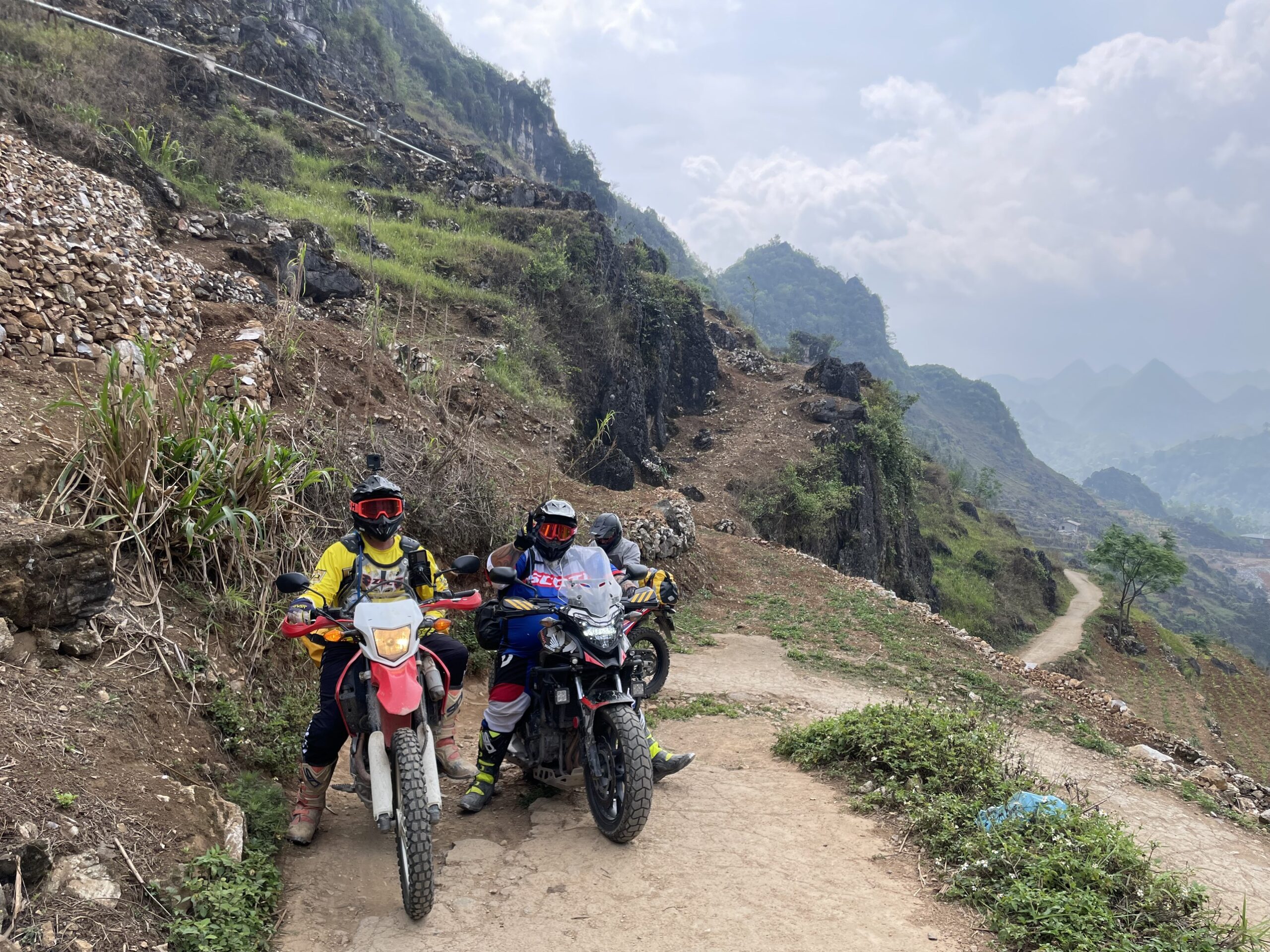
Road Safety Tips For Riding In Vietnam
Things To Know About Vietnam Motorbike Tours For Safe Riding
Why Honda motorcycles are mostly used for off-road trails in Vietnam?
Honda motorcycles are designed and engineered for off-road performance. Honda has a wide range of motorcycles that can handle different types of off-road trails, from dirt roads and gravel paths to rocky hills and muddy fields. Honda motorcycles are equipped with features such as powerful engines, strong frames, long-travel suspension, dual-sport tires, and high ground clearance, which enable them to overcome various obstacles and challenges on the road.
Honda motorcycles are easy to maintain and repair. One of the advantages of Honda motorcycles is that they are relatively simple and straightforward to operate and maintain. Honda motorcycles have fewer parts and components than other brands, which means they are less likely to break down or malfunction. Honda motorcycles are also easy to find spare parts and accessories for, as they are widely available and affordable in Vietnam. Honda also has a network of authorized dealers and service centers across the country, which provide professional and timely support and assistance to the our riders.
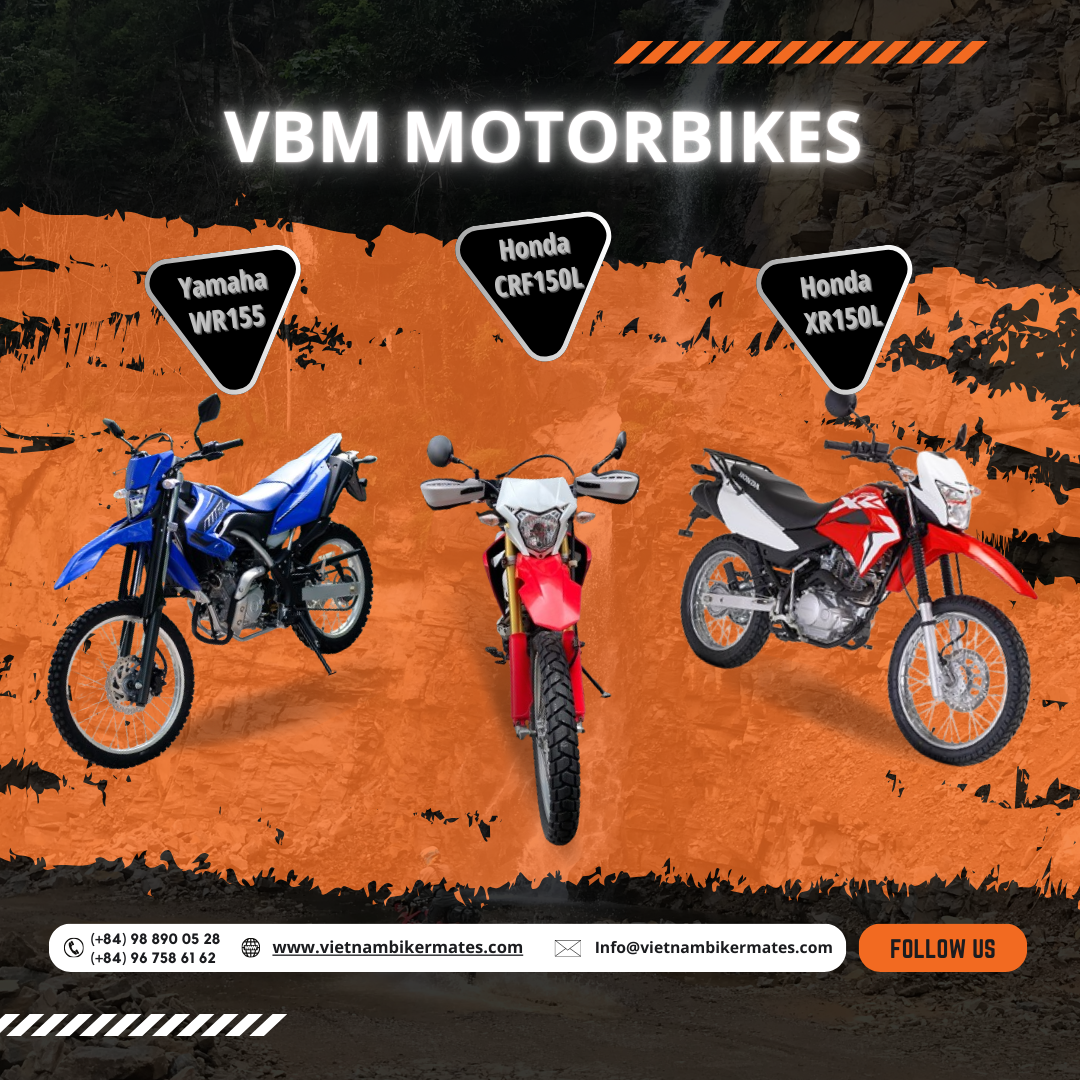
Our Motorbikes
We understand that a successful adventure motorbike tour hinges on having reliable equipment and motorbikes. That’s why we take pride in maintaining a meticulously inspected and serviced fleet of bikes from renowned brands like Yamaha and Honda. All our motorcycles are in excellent condition, and regular inspected and maintained ensuring you can focus on the thrill of the ride without worrying about breakdowns.
Explore our fleet today!
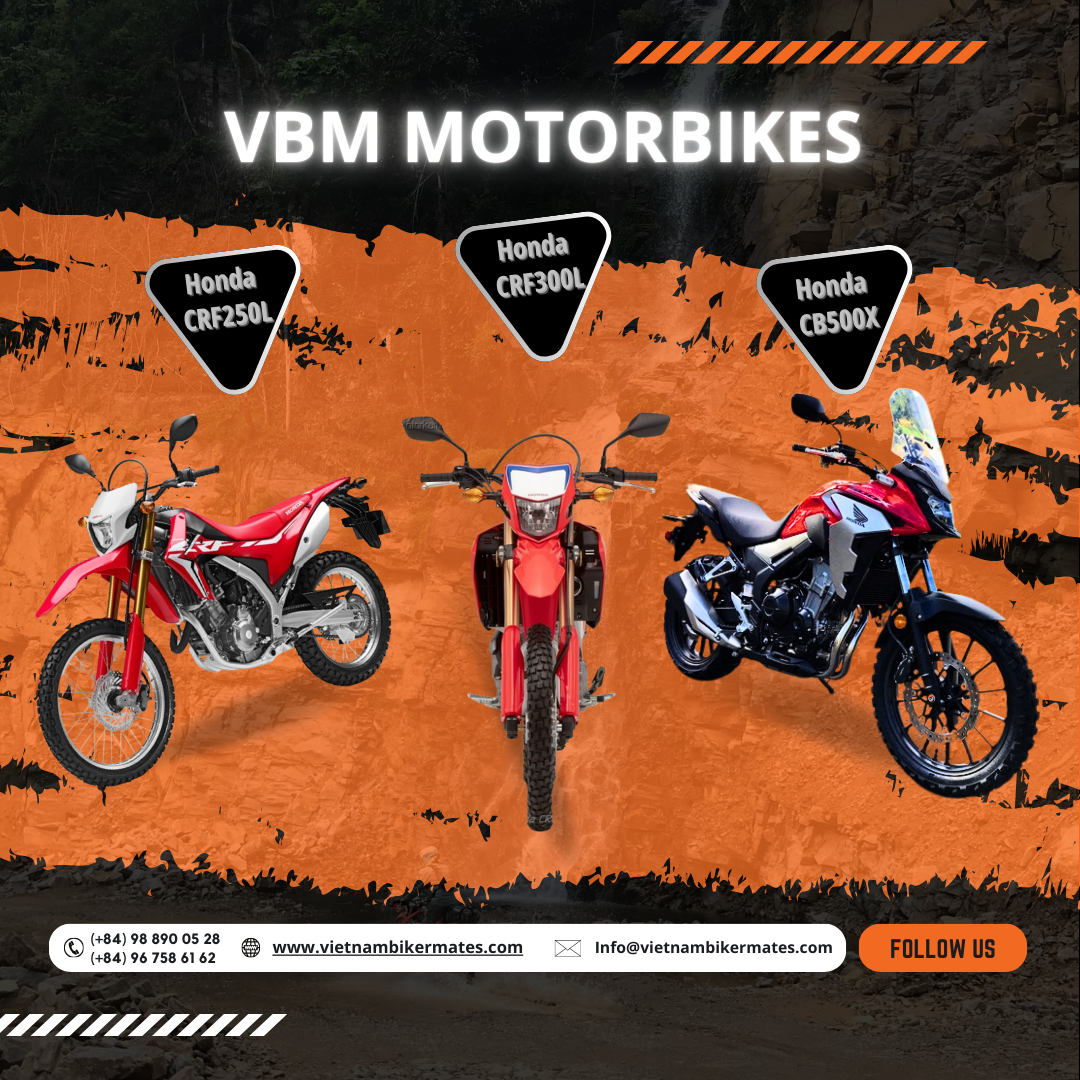
Our Motorbikes
Read More >>>> Why Honda motorcycles are mostly used for off-road trails in Vietnam?
Is gear included?
Our commitment to road safety for riding in Vietnam also extends to providing essential safety equipment.
We will provide basic gear including helmets, jackets, boots and knee pads & elbow pads. However, it’s recommended to bring your own riding gear for a more comfortable and personalized fit.
How many miles will we cover each day?
What we do in case of emergency?
Our team is dedicated to ensuring your road safety for riding in Vietnam. We’re equipped to handle emergencies and provide expert support.
- 24/7 Emergency Contact: A designated representative is available around the clock. All the relevant people including tour guide and accommodation are given information on how to contact the emergency number.
- Emergency Procedures: We have established protocols for various emergency situations based on level of incident.
- Medical Support: We can assist with arranging medical care if needed.
- After Incident: A de-briefing session will be held internally with key personnel as dictated by the situation, during which a review of the situation and subsequent actions will be reviewed and updated for our protocols.
By familiarizing yourself with potential hazards, the local traffic laws and our tips to ride motorbike in Vietnam, you are all set for an exciting motorbike adventure. Hopefully, our tips for riding in Vietnam will assist you in staying safe while maximizing the thrill of your motorbike adventure.
For endless fun, you can explore some of the best motorbike rides in Vietnam for ADV riders or pick up an adventure date with Vietnam Biker Mates for this winter 2024 and next year 2025.
Read more about our tips for riding in Vietnam
Essential travel insurance for your Vietnam motorbike adventure
How to Find the Best Motorbike Helmet for Your Vietnam Trip 2023

